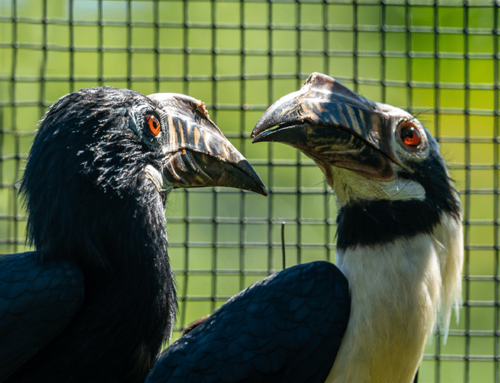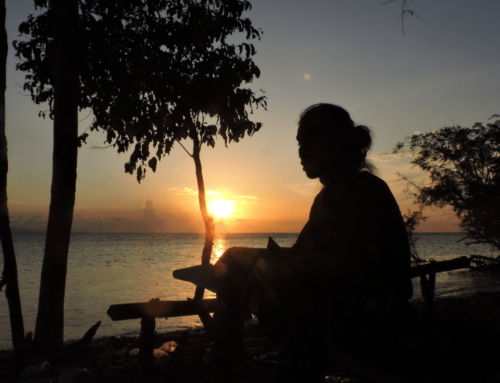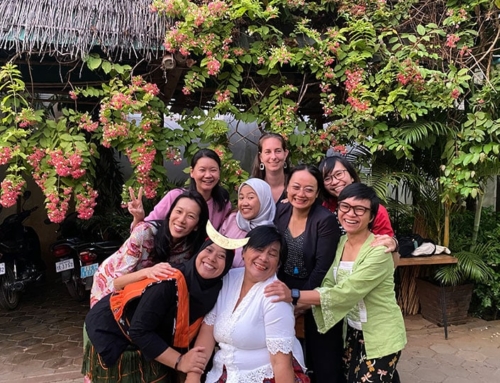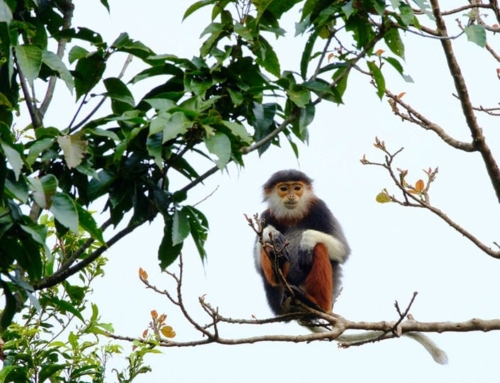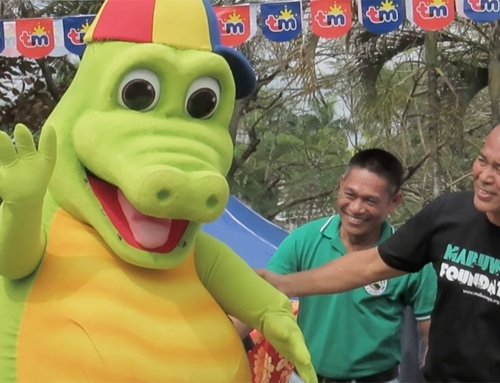When it is estimated that only 60 of a species still exist in the wild, every single individual is important. Gemma Goodman and Anna Heath from our Research Team describe a recent rescue operation run by our White-bellied Heron network to save one bird.
On November 11 in the Gengga countryside of China, a group of people could be seen carefully carrying one of the world’s rarest birds to safety.
Capturing and carrying a fully-grown White-bellied Heron (the second largest heron with an estimated wingspan of two metres) is not an easy feat, but this individual was weak and exhausted. Its rescuers had spotted it being chased on the bank of the Zhenkang River, in a region where it has not been seen since 2014 and was assumed locally extinct.
However, local conservationists had not lost hope, and over the past few years, Synchronicity Earth has supported work to engage and raise awareness about the bird with communities in this region.
It was therefore a sign of success that local people had recognised the species and rescued it, bringing it to local authorities. The forest police contacted Professor Han Lianxian, the Chinese coordinator for the international White-bellied Heron Working Group, and he immediately sprang into action to coordinate efforts to rescue, rehabilitate and release this bird.
International cooperation for an injured bird
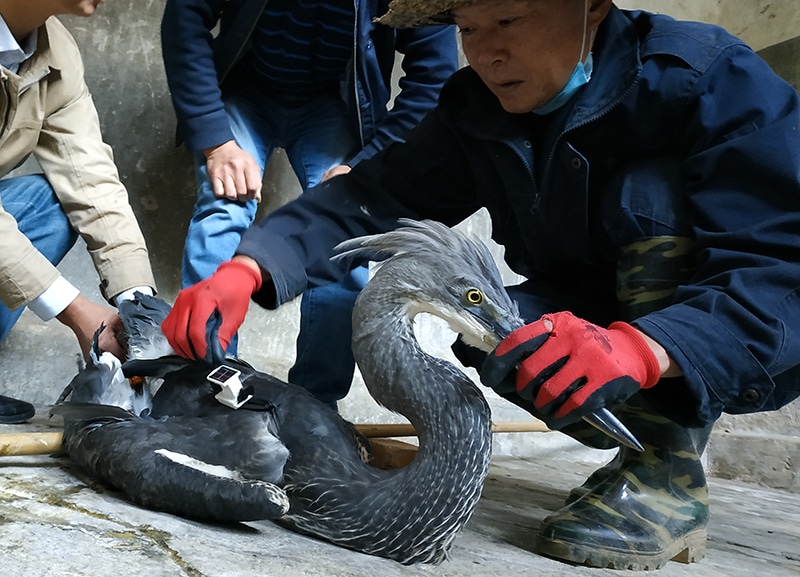
© Han Lianxian
The White-bellied Heron Working Group was created with the support of Synchronicity Earth to bring together the people and organisations across the bird’s international range to share expertise and give this Critically Endangered species the best chance at survival.
Because of this network, Synchronicity Earth was able to quickly link Professor Han to experts in captive care of herons, who provided precise advice on feeding and care which was quickly implemented. This meant that after a few days this bird, a species notoriously hard to keep in captivity, was able to gain strength and was ready to be released.
We were also able to arrange for a vet with experience of similar species to travel to China from Singapore Zoo to do a full health check of the bird and provide support as it was released into the same area it was found. A satellite transmitter and leg ring were also fitted on the bird to identify it and to provide much needed information about its movements.
Every sighting counts
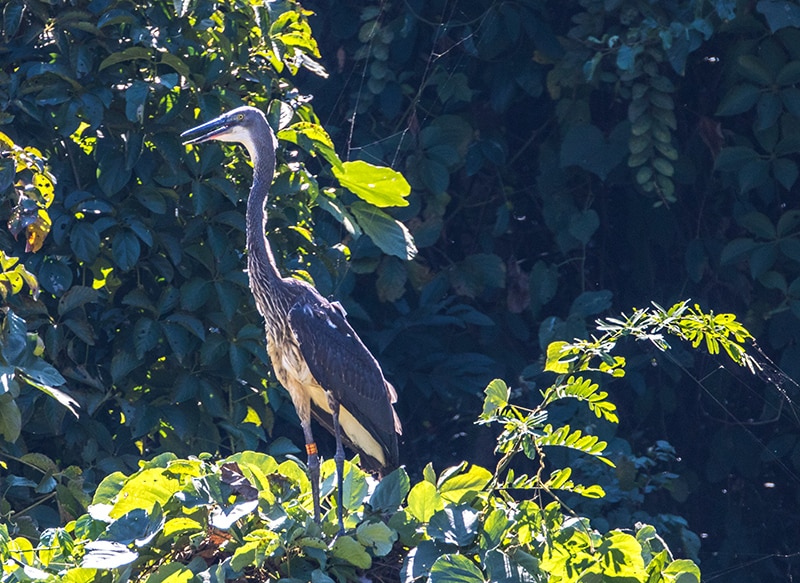
© Han Lianxian
It is estimated that there are only around 60 White-bellied Herons left. This means that every sighting gives a boost to local conservation work and the people working to conserve the species: every heron counts.
This heron is the third discovery this year of a heron sighted in an area where it was assumed extinct, which suggests there may be more birds in the wild than was originally estimated. Following the exciting news that a White-bellied Heron had been caught on a camera trap in a new site in India, we heard in November that a White-bellied Heron had been spotted and photographed by a tour guide in Manas National Park, India; another area where the bird has not been seen for decades.
Synchronicity Earth has taken an active role in convening and supporting work on the Critically Endangered White-bellied-Heron over the past five years. This has included co-authoring an international conservation strategy, funding, and helping to facilitate work on this species throughout its range states. We have supported organisations and individuals to develop their capacity, as well as involving key experts in multiple initiatives designed it protect the bird; including captive breeding, fitting satellite transmitters, remote habitat analysis and field research.
After five years, the coordinated efforts of range states and dedicated individuals has started to pay off! The rescue, rehabilitation and release of the injured bird was testament to the importance and strength of the people working on this Critically Endangered species.
An unhappy ending
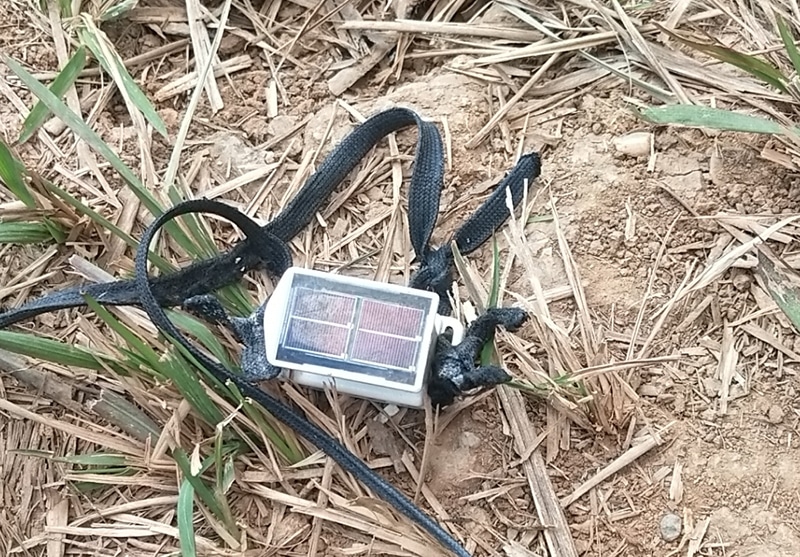
© Han Lianxian
Tragically, a few days after the release, the satellite transmitter and leg tag were found near the release site, having been deliberately removed from the bird by a human. This means that the bird was likely hunted for meat, and these items were removed to avoid detection.
Officials are now looking to capture and prosecute the perpetrator of this crime. This is unfortunately not an uncommon story for species conservation in areas which are densely populated such as East and Southeast Asia.
Despite this upsetting result, the heroic efforts by local communities, Chinese officials, Professor Han Lianxian, Baoshan Wildlife Centre and a number of others, still give us hope for the future of this species in China.
It is very likely that this bird would never have been rescued in the first place if it hadn’t been for the engagement we had previously supported with these communities, and this is why we will continue to invest in going forward with the hope that the next White-bellied Heron that is found in China will have a happier ending.
Far from giving up
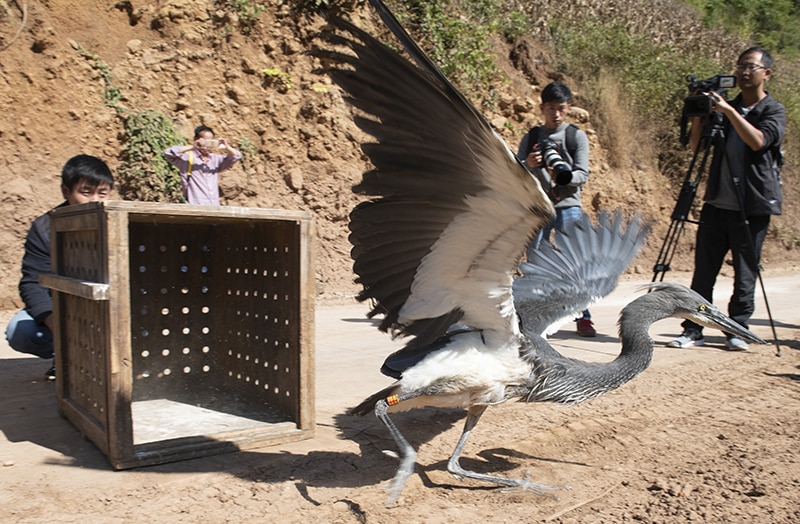
© Han Lianxian
The new sightings this year, alongside others in Bhutan and efforts by our Bhutanese partners, the Royal Society for the Protection of Nature, to build a captive breeding facility for the bird, provide hope to those who care and try to conserve this species.
More news will be forthcoming – including the opening of the breeding centre in 2020 and its first efforts to capture wild young birds to increase survival and viability of the species.
Our deepest thanks to donors who have supported this work through our Asian Species programme across Bhutan, China and India.
One of the goals of our Asian Species programme is to empower people and organisations who are doing extraordinary work on a local level so they can have greater impact.
This includes targeted training and providing flexible core funding, but an important part of this support is bringing our partners together locally to learn from one another and work together, as the White-bellied Heron network did in this instance. Learn more about our approach to species conservation in Asia and our partners through our Asian Species programme.

